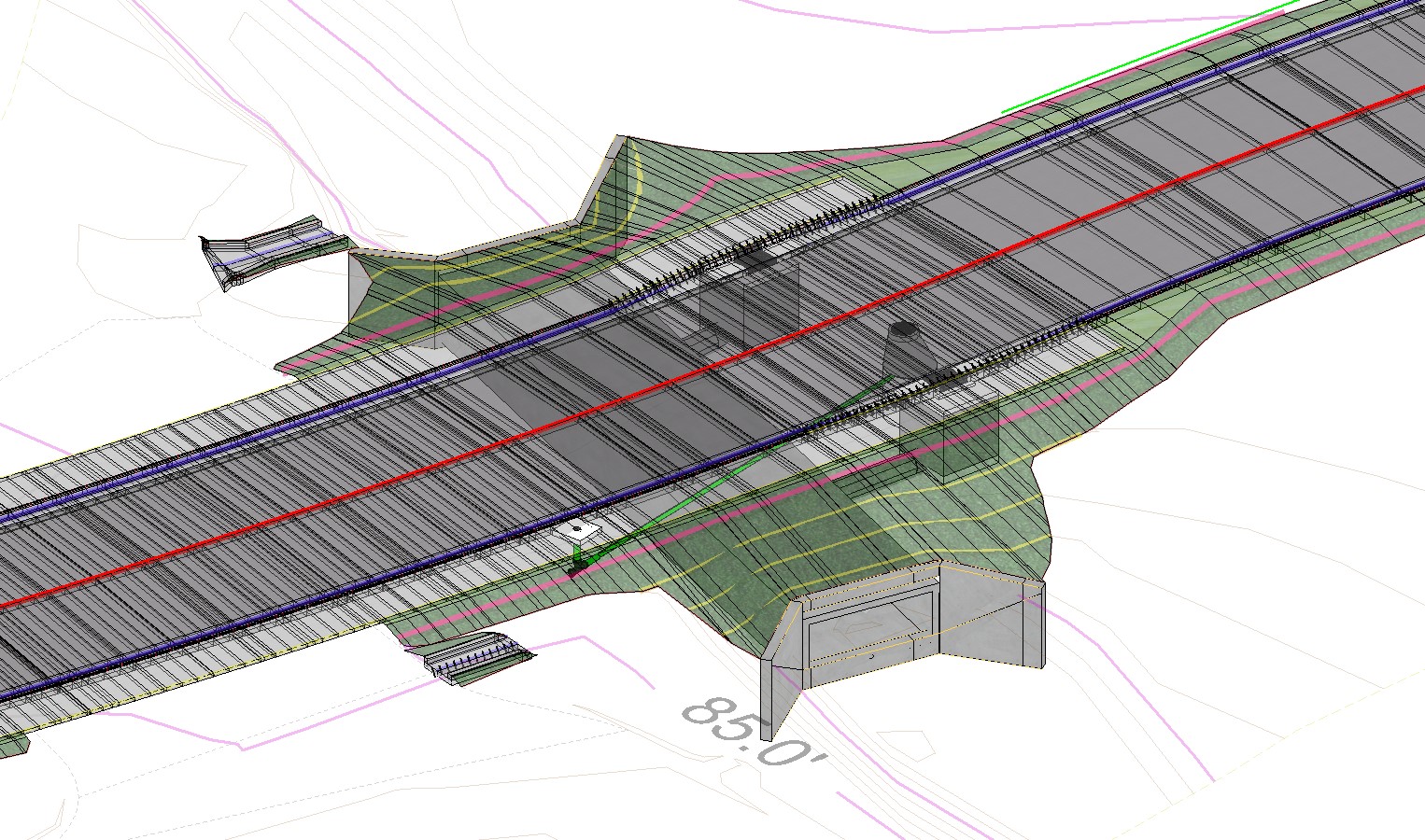Pioneering Engineering Solutions for Complex Challenges
At Gradient, PLLC, innovation is more than a buzzword—it's a mindset that drives us to deliver exceptional results. Our team is committed to rethinking conventional approaches and pushing the boundaries of what's possible in stormwater management and site development. We believe in creating solutions that go beyond "good enough," providing real value to our clients and communities.

Our Commitment to Innovation
What sets Gradient apart is our dedication to staying at the forefront of the industry. Our engineers:
- Continuously engage with the latest research and technologies in stormwater engineering.
- Apply cutting-edge tools to solve complex design challenges.
- Deliver creative, sustainable, and cost-effective solutions.
Innovation is ingrained in everything we do, enabling us to challenge the status quo and consistently exceed expectations.
Thought Leadership and Expertise
Gradient’s team members are recognized as thought leaders in their field. They contribute to peer-reviewed journals and present at leading industry conferences, enriching our approach and providing clients with advanced, research-backed solutions.
Check out team members' insights and perspectives on industry-relevant topics.
Adding Value Through Innovation
At Gradient, our innovative practices result in time and cost savings for our clients. By integrating value engineering into every stage of stormwater and site development, we redefine how challenges are addressed.
Examples of Innovative Practices
- Surface Water Treatment Planning: Assist with planning of surface water treatment practices such as the Algal Turf Scrubber® of Hydromentia to restore polluted water bodies.
- Cloud-Based Data Collection: Reduces errors and accelerates field data processing.
- Parallel Storm Drain Systems: Avoids utility conflicts and street closures in urban areas, saving time and costs.
- Data Visualization Techniques: Enhances stakeholder communication by clearly illustrating project impacts.
How Gradient Applies Innovation
State-of-the-Art Tools and Technologies
Our engineers utilize advanced modeling software and design tools to create sustainable, effective solutions for stormwater management and site development.
Collaborative Approach
We work closely with clients to understand project needs, challenges, and goals, ensuring our solutions deliver maximum value.
Research-Driven Solutions
Our expertise in stormwater research and design informs every project, ensuring compliance with regulatory standards while optimizing functionality and cost-efficiency.
Select Research Publications by Gradient Team Members
(Highlighted authors are part of the Gradient team)
- Ekka, S. A., Hathaway, J. M., & Hunt, W. F. 2024. Impact Assessment of Socio-Economic Scenarios on a Water Quality Swale: An Exploratory Analysis with WinSLAMM. Sustainability, 16(
24), 10857. https://doi.org/10.3390/ su162410857 - Ekka, S.A., Hunt, W.F. & McLaughlin, R.A. 2024. Systematic evaluation of swale length, shape, and longitudinal slope with simulated highway runoff for better swale design. Environ Sci Pollut Res. https://doi.org/10.1007/s11356-024-35474-1
- Ekka, S.A., Hendrik Rujner, Günther Leonhardt, Godecke-Tobias Blecken, Maria Viklander, and W.F. Hunt. 2021. Next Generation Swale Design for Stormwater Runoff Treatment: A Comprehensive Approach. Journal of Environmental Management. Vol. 279, 111756, Pages 1-16. https://doi.org/10.1016/j.jenvman.2020.111756
- Hunt, W.F., E.A. Fassman-Beck, S.A. Ekka, K.C. Shaneyfelt, and A. Deletic. 2020. Designing Dry Swales for Stormwater Quality Improvement Using the Aberdeen Equation. Journal of Sustainable Water in the Built Environment, Vol. 6(1):05019004-1:05019004-8. https://ascelibrary.org/doi/abs/10.1061/JSWBAY.0000886
- Strickling, H., DiCarlo, M., Shafiee, M., Berglund, E. 2019. Simulation of containment and wireless emergency alerts within targeted pressure zones for water contamination management. Sustainable Cities and Society, 52. https://doi.org/10.1016/j.scs.2019.101820.
- Strickling, H. L., & Obenour, D. R. 2018. Leveraging spatial and temporal variability to probabilistically characterize nutrient sources and export rates in a developing watershed. Water Resources Research, 54. https://doi.org/10.1029/2017WR022220.
- Winston, R.J., Lauffer, M.S., Narayanaswamy, K., McDaniel, A.H., Lipscomb, B.S., Nice, A. J., and W. F. Hunt. 2015. "Comparing Bridge Deck Runoff and Stormwater Control Measure Quality in North Carolina." Journal of Environmental Engineering. 141(1).
- Adamack A.T., Rose K.A., Breitburg D.L., Nice A. J., Lung W.S. 2012. Simulating the effect of hypoxia on bay anchovy egg and larval mortality using coupled watershed, water quality, and individual-based predation models. Marine Ecology Progress Series 445:141-160.
- Nice, A. J., W.S. Lung, and G.F. Reidel. 2008. Modeling Arsenic in the Patuxent Estuary. Environmental Science and Technology. May 2008.
- Lung, W. S., and A. J. Nice. 2007. A Eutrophication Model for the Patuxent Estuary: Advances in Predictive Capabilities. Journal of Environmental Engineering. September 2007.
- Ekka, S. A., B. E. Haggard, M. D. Matlock, and I. Chaubey. 2006. Dissolved Phosphorus Concentrations and Sediment-Phosphorus Interactions in Effluent Dominated Ozark Streams. Ecological Engineering Vol. 26 (4): 375-391.
- Haggard, B. E., S. A. Ekka, M. D. Matlock, and I. Chaubey. 2004. Phosphate Equilibrium between Stream Sediments and Water: Potential Effect of Chemical Amendments. Transactions of the ASAE Vol. 47 (4): 1113-1118.
Our Toolbox
- Cartegraph® (Asset Management Software)
Why Innovation Matters
By challenging traditional practices, Gradient delivers:
- Sustainable Designs: Minimizing environmental impact while maximizing project efficiency.
- Cost-Effective Solutions: Saving time and resources without compromising quality.
- Enhanced Project Outcomes: Meeting regulatory standards while exceeding client expectations.
Partner with Gradient for Innovative Solutions
When you work with Gradient, you’re choosing a team that values creativity, sustainability, and precision. Let us help you transform challenges into opportunities with our innovative approach to stormwater management and site development.
Contact us today to discuss your project and learn how we can deliver exceptional results through innovation.
